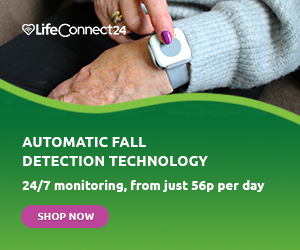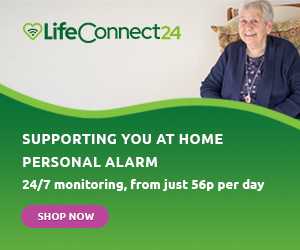A stroke can happen to anyone, at any time, and is a life-threatening emergency that requires urgent medical attention. This makes it crucial to be able to recognise the common symptoms of a stroke in yourself or another person.
Over 150,000 people in the UK suffer a stroke each year. The most effective treatment is only possible when the condition is diagnosed within three hours of the first symptoms. In other cases, a stroke can result in significant physical and mental health disabilities or even death. In England alone, the disease claims the lives of more than 30,000 a year.
The NHS helps people to recognise the common symptoms by getting them to remember the word F-A-S-T, which stands for:
- Face – Is one side of the face drooping? A stroke victim may be unable to smile, or part of their mouth or one eye may sag.
- Arms – Can both arms be raised? Weakness in one arm is a common symptom.
- Speech – Is speech slurred? Speech may be garbled or even impossible.
- Time – If you notice any of these signs – in yourself or someone else – it’s time to call 999.
A person suffering a stroke may also be unable to understand what you’re saying to them.
How Stroke Symptoms Can Vary
Besides weakness in the face or arm, other sudden signs include general confusion and loss of balance.
While many symptoms happen abruptly, some can gradually develop. These include migraines and deterioration of sight, although severe headaches and visual impairment can also occur suddenly with a stroke.
Symptoms also vary depending on the type of episode – ischaemic or haemorrhagic. Most strokes are ischaemic, caused when a blood clot stops blood getting to the brain. Haemorrhagic strokes occur when a blood vessel going to the brain bursts.
Ischemic stroke symptoms include:
- Sudden numbness or weakness on one side of the body.
- Sudden confusion.
- Loss of vision in one or both eyes.
- Dizziness.
Signs of a haemorrhagic stroke include:
- Losing consciousness.
- Seizure.
- Loss of co-ordination
- Inability to move.
- Numb leg or arm.
- Loss of speech.
- Nausea.
Another form of stroke is a transient ischaemic attack (TIA), also called a mini-stroke. Symptoms are usually similar to those of a full-blown stroke but may go away faster. Nevertheless, a TIA is still an emergency, putting you at risk of a major stroke.
When You Need to be Extra vigilant
It’s particularly important to be aware of the common signs of a stroke if you or people you live with are in a high-risk group. Factors that increase the risk include:
- Ageing.
- High blood pressure.
- Diabetes.
- Smoking.
- Obesity.
- Heavy drinking.
- Genetics.
High blood pressure (hypertension) is the leading cause of stroke – you can learn about others in our in-depth article. Many people who have a stroke are aged over 55. However, younger people – and even children – can fall victim to the disease, too. The likelihood of a stroke is also increased if you’ve already had a stroke, mini-stroke, or a heart attack.
Symptoms in Women
As the Stroke Association points out, women are more likely to have a stroke, and the symptoms may vary from the typical warning signs common among both men and women. Women have a greater risk simply because on average they live longer.
Some of the stroke symptoms in women may not be perceived as signs of the disease, and this can delay treatment. Health experts at Harvard Medical School in the USA say strokes kill twice as many women as breast cancer.
Symptoms in women, that may differ from those in men, include:
- Hiccups.
- Fainting.
- Difficulty breathing.
- Hallucination.
Women have certain unique risk factors. These include:
- High blood pressure during pregnancy.
- Certain birth control medication, in cases of high blood pressure.
- Higher likelihood of stress disorders, which increase the risk.
Why Time is of the Essence
Recognising the common symptoms and getting prompt medical attention reduces the risk of serious brain damage – or death – when blood flow to the brain is cut off, starving it of oxygen and nutrients, and killing cells.
A stroke can happen extremely quickly, and, as soon as it begins, nearly two million brain cells die every minute. Therefore, time is of the essence in getting fast treatment followed by specialised aftercare. The quicker a stroke is diagnosed and treated, the better chance you have of a successful recovery.
According to the NHS, it’s still crucial to get checked out at hospital even if the symptoms of a stroke disappear while waiting for an ambulance. After an initial evaluation, you may need more in-depth assessments, ahead of specialist treatment.
You can learn more about the condition by reading our detailed guide. On our blog you can also find out about the 20 most common medical conditions which affect older people.
Personal Alarm Information
If you believe that your risk of having a stroke is high, or if you’re recovering from a stroke, it may be wise to get a personal alarm. Our alarm system gives you 24-hour access to our highly-trained Response Team, who will be able to help you at a push of a button.
As an alarm user you’ll wear a small pendant button around your wrist. If you feel unwell or fall at home, simply press the help button and the Response Team will respond. They’ll assess your situation and call for help, informing your emergency contacts, and an ambulance if required.
If you have suffered from a stroke you also qualify for VAT Exemption when purchasing an alarm. For more information about our service please get in touch with our friendly team on 0800 999 0400. Alternatively, complete our contact us form and we will get back to you as soon as possible.



Leave A Comment